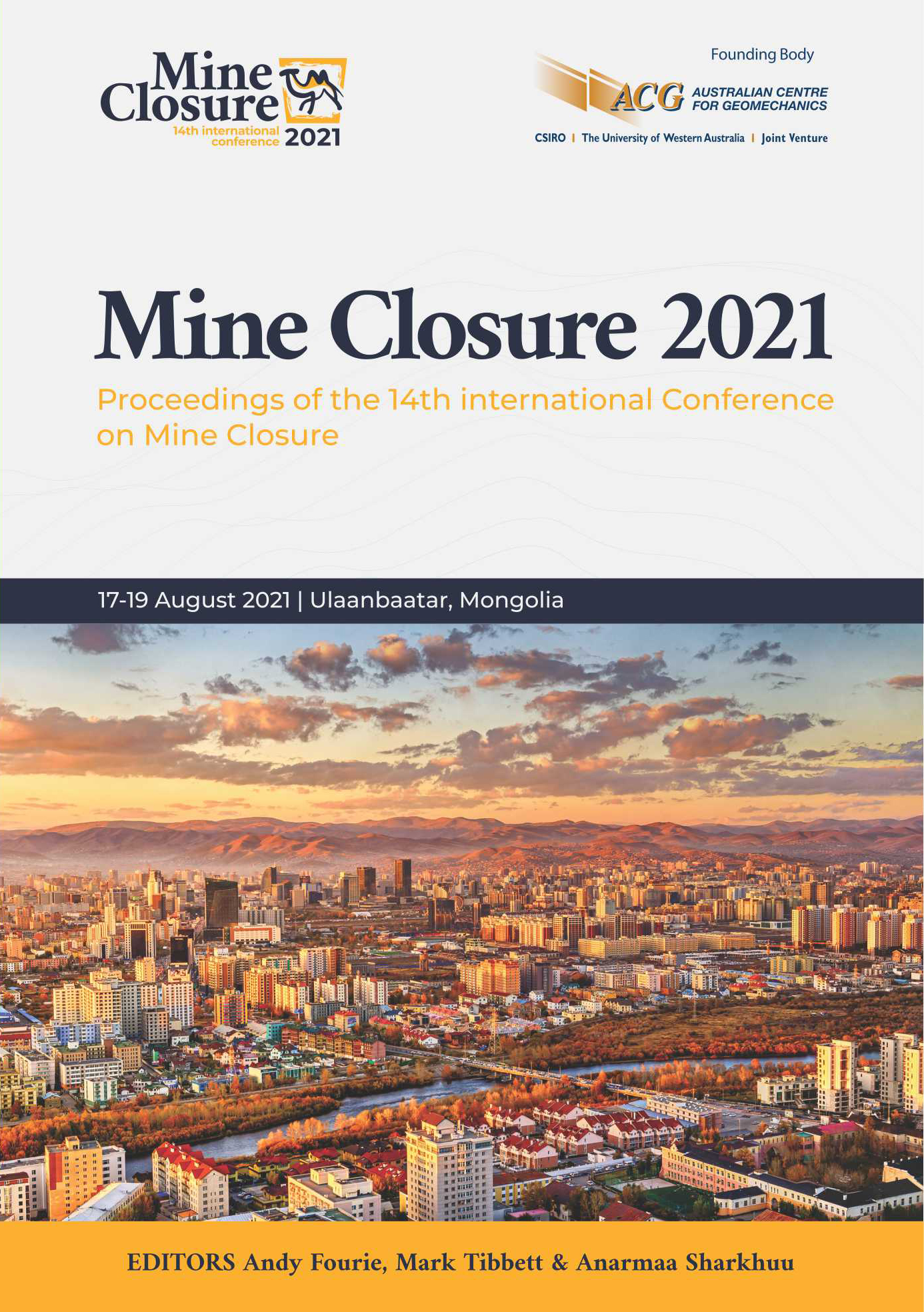InSAR assets in ground movements survey on abandoned coalfields

|
Authors: Morel, J; Foumelis, M; Raucoules, D; Lemal, S |
DOI https://doi.org/10.36487/ACG_repo/2152_47
Cite As:
Morel, J, Foumelis, M, Raucoules, D & Lemal, S 2021, 'InSAR assets in ground movements survey on abandoned coalfields', in AB Fourie, M Tibbett & A Sharkuu (eds), Mine Closure 2021: Proceedings of the 14th International Conference on Mine Closure, QMC Group, Ulaanbaatar, https://doi.org/10.36487/ACG_repo/2152_47
Abstract:
Rising groundwater in abandoned mines may result in ground movements at the surface overlying underground works. Feedbacks on several abandoned coalfields (e.g., France, Belgium and UK) show that significant uplift can occur, reaching in some cases up to several tens of centimetres. In the framework of its missions, the Post-mining Department of the French Geological Survey (BRGM) has the mandate of surveying French abandoned coalfields for potential ground movements. The most common used method for this mission is levelling, performed at a given frequency. Mine water recovery is a process that can last several tens of years. With the goal to optimise the long-term survey, the levelling technique has been re-examined by considering: 1) the phenomenology and kinetics of ground movements expected, in relation to water recovery rates; 2) alternative geodetic technologies, specifically spaceborne Interferometric Synthetic Aperture Radar (InSAR). An InSAR retro-analysis of ground movements, covering more than 20 years after mine activity ceasing, has thus been realised on a French abandoned coalfield aiming to: 1) extend ground movements detection capabilities in areas not covered by levelling; 2) compare InSAR analysis to levelling data to evaluate robustness of displacement measurements. This study was carried out using the entire archive of ERS, ENVISAT and Copernicus Sentinel-1 SAR data. The InSAR analysis was able to highlight ground movements of a few millimetres/year, with the same order of precision than classical levelling methods. The observed ground displacement patterns expand well beyond the coalfield, indicating the influence of non-mining-induced phenomena as well. Natural factors, such as local geology (clay content) or surface morphology (e.g., riverbeds), seem to be correlated to areas exhibiting relatively higher displacement rates. Further studies are necessary to separate accurately the contribution of the different factors in the induced ground deformation. The comparison of InSAR results with levelling measurements shows a notable correlation. It emphasises also the importance to verify the stability of levelling benchmarks, as they might be affected by a combination of mining and non-mining induced displacements. These results point out the necessity of being cautious when interpreting the origin of damages caused by ground movements. Our findings offer perspectives for the application of satellite InSAR for long-term survey of ground movements on abandoned coalfields especially when the expected movements are relatively slow. The ability to cover a wide area, frequency of data availability, accuracy of the measured displacement rates and the opportunity to perform retro-analysis are strong assets in post-mining monitoring context
References:
Banton, C, Bateson, L, McCormack, H, Holley, R, Watson, IA, Burren, R, Lawrence, D & Cigna, F 2013, ‘Monitoring post-closure large scale surface deformation in mining areas’, in M Tibbett, AB Fourie & C Digby (eds), Proceedings of the Mine Closure International conference, Australian Centre for Geomechanics, Perth, pp. 97–108.
Devleeschouwer, X, Declercq, PY, Flamion, B, Brixko, J, Timmermans, A & Vanneste, J 2008, ‘Uplift revealed by radar interferometry around Liege (Belgium): a relation with rising mining groundwater’, Proceedings of the Post-Mining Symposium, Nancy, France.
Foumelis, M, Raucoules, D, Colas, B & de Michele, M 2019, ‘On the effect of interferometric pairs selection for measuring fast moving landslides’, Proceedings of the International Geoscience and Remote Sensing Symposium (IGARSS 2019), Yokohama, Japan.
Hanssen, RF 2001, Radar Interferometry: data interpretation and error analysis, Springer Verlag edition.
Herrero, C, Munoz, A, Catalina, JC, Hadj-Hassen, F, Kuchenbecker, R, Spreckels, V, Juzwa, J, Bennett, S, Purvis, M, Bigby, D & Moore, D 2012, ‘Prediction and monitoring of subsidence hazards above coal mines (Presidence)’, final report, RFCS Presidence project,
Massonnet, D & Feigl, K 1998, ‘Radar interferometry and its application to changes in the Earth’s surface’, Rev. Geophys., vol. 36, no. 4, p. 441.
Raucoules, D, Colesanti, C & Carnec, C 2007, ‘Use of SAR interferometry for detecting and assessing ground subsidence’, Compte Rendus Geosciences, vol. 339, no. 5, p. 289
Wegmüller, U, Werner, C, Strozzi, T, Wiesmann, A, Frey O, & Santoro, M 2016, ’Sentinel-1 Support in the GAMMA Software’, Procedia Computer Science, vol. 100, pp. 1305-1312.
Van Vliet-Lanoë, H 1999, ‘Evolution morphotectonique récente du bassin houiller Nord-Pas de Calais dans le cadre de l’Europe de l’Ouest’, Specific report for Charbonnages de France.
© Copyright 2025, Australian Centre for Geomechanics (ACG), The University of Western Australia. All rights reserved.
View copyright/legal information
Please direct any queries or error reports to repository-acg@uwa.edu.au
View copyright/legal information
Please direct any queries or error reports to repository-acg@uwa.edu.au
